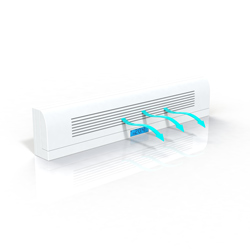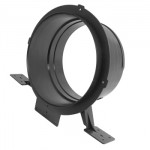 Given the never-ending heat and humidity of the summer across North America, cooling a home to a reasonable and safe temperature can be crucial to a person’s well being. Air conditioning is arguably the best solution.
Given the never-ending heat and humidity of the summer across North America, cooling a home to a reasonable and safe temperature can be crucial to a person’s well being. Air conditioning is arguably the best solution.
Selecting the right type of air conditioner system is important, as is venting it correctly. This depends on a variety of factors, such as the area needing to be cooled, the amount of heat that is created within that area, and cost.
Basically, air conditioners use energy to remove heat from a specific area, while using ventilation to reduce moisture and circulate air for freshness.
Think of a refrigerator, where a compressor is used to squeeze a coolant making it hot. This flows into a condenser that dissipates the heat turning the gas back into a liquid. The liquid enters an evaporator that reduces the pressure causing it to evaporate, which extracts heat from the air around it.
There are several types of air conditioners, each cools and ventilates a home in different ways and requires different methods of venting.
Window Air Conditioners
For single rooms such as a bedroom, a window air conditioner can help eliminate sleepless nights. In this type of cooling system, all of the components, such as the coils, condenser, and compressor, are all contained within a single unit. It does not require any venting as it is mounted in an opening or slot, usually a window.
The evaporator is made of copper tubing and is covered with fins. The air in the room becomes cooled when it passes over the evaporator. An air filter sits in front of the evaporator to filter the air before it becomes cooled and blown back into the room.
If the vent on the unit is open, then outside air can enter into the room and, along with the cooled air, can circulate throughout the room. Likewise, a closed vent restricts warm outside air from coming inside. An open vent reduces the unit’s efficiency because the unit has to work harder to cool the air, but keeping it open refreshes stale air and removes any possible odors.
Portable Air Conditioners
Another affordable solution for cooling small spaces, or just occasional use, is a portable air conditioner. Typically, with these, warmer air is pushed outside using a kit designed for a window that consists of an exhaust hose connected to a window slider.
If a window is not available, the exhaust hose can pass through a wall, either to an outside wall cap or roof vent or to an unconditioned area such as the garage.
A hole to accommodate the exhaust hose must be cut through an area in the wall where there is no plumbing or wiring. It’s best to seal the edges of the hole with silicone caulk to prevent leaks.
Central Air Conditioners
Central air conditioners and heat pumps are designed to cool larger areas, such as an entire home.
One common type of central air conditioning system is called a split system. It consists of an outside component containing a condenser and compressor, and an indoor evaporator coil, which is typically installed on top of the furnace in a home.
Using electricity as its power source, the compressor pumps refrigerant through the air conditioning system to collect heat and remove it from the home. This happens when the warm air is drawn by the furnace fan across the cooled indoor coils.
The heat transfers to the coil, thereby cooling the air. The cooled air is distributed throughout the house by using the existing heating system’s duct work while the heat collected by the evaporator is pumped outside.
Cool all the Time
No matter the conditions outside, the inside of any room, space, or home can be cooled to a comfortable temperature. Select the right system for the existing framework to ensure cool customers even in soaring heat.



